What Language is Spoken in Bali?
For the convenience of communication with other regions of Indonesia, the local residents of Bali are familiar with Indonesian. However, like in other areas of the country, local languages and dialects are preserved here. For this reason, the modern spoken language of Bali can be described as a mixture of Indonesian and traditional Balinese.
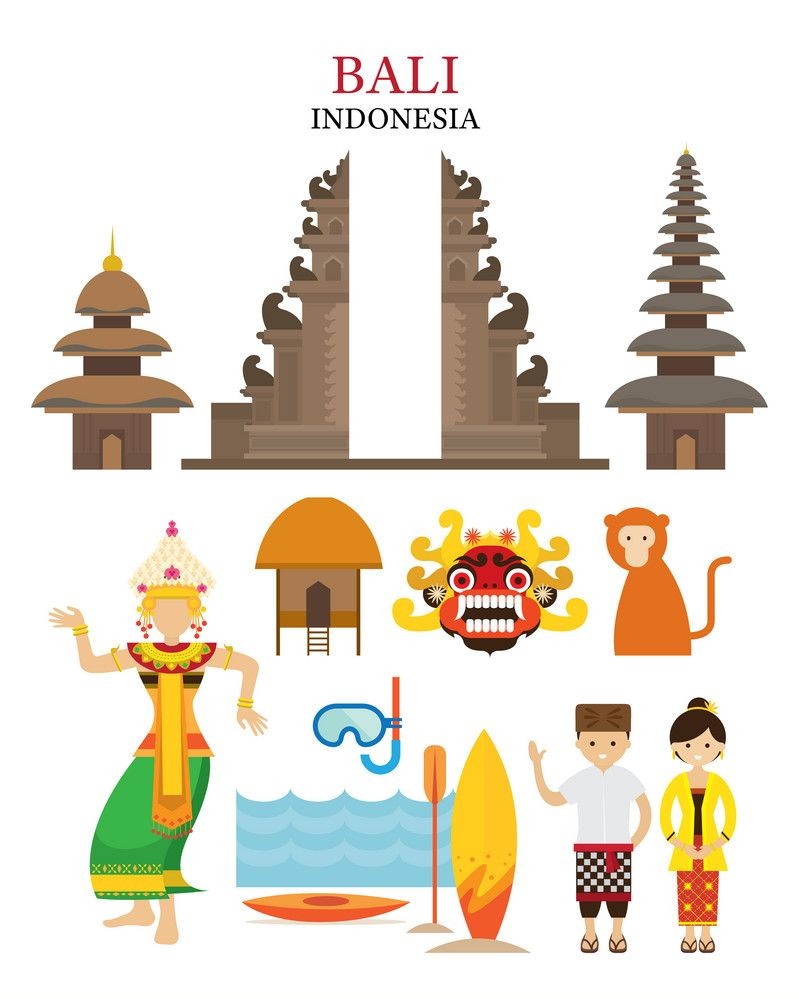
The Balinese language plays not only a communicative role but also influences the identity and organization of the local communities on the island. Language is a key tool for transmitting traditions, myths, stories, and the wisdom of older generations to the youth. It is also used in religious ceremonies. This helps to preserve the unique cultural characteristics of the island.
This is reflected not only in the general culture of the island but also, for example, in signs and historical names of districts and other attractions. For convenience, all of this is translated into the Latin alphabet.
Indonesian Language
Since Bali is part of the Republic of Indonesia, Indonesian is the state (official) language of the island and serves as a means of inter-ethnic communication among all the provinces within Indonesia. Indonesian belongs to the Austronesian language family and has long developed as one of the variants of the Malay language. The official name of the language, "Indonesian," was adopted only in 1928, when it completely replaced the designation "Malay." It finally took shape as a distinct language in the first half of the 20th century.
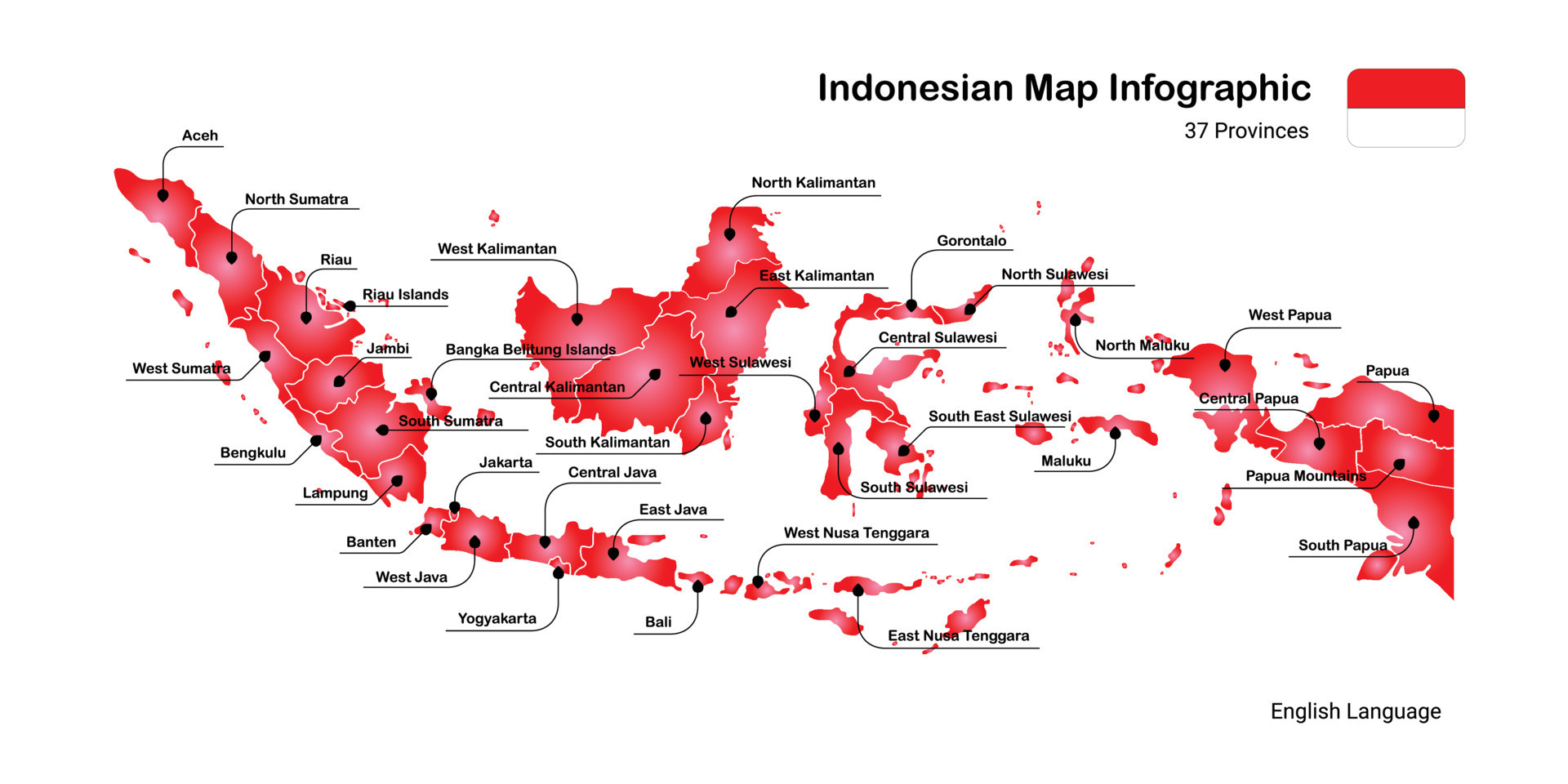
Today, Indonesian is one of the most widely spoken languages in the world, with around 200 million speakers. In Bali, Indonesian is used in government regulation, domestic and foreign policy, and national legislation. The language is also used as the medium of instruction in schools and higher education institutions.
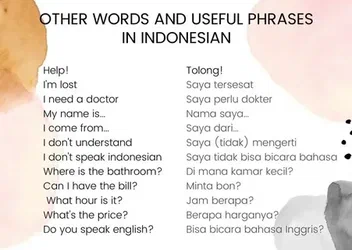
Knowing some basic Indonesian words is essential for communicating with hotel staff, at markets—especially when bargaining for cheaper fruits or vegetables—at shopping centers, and in local souvenir shops. Indonesian will also be helpful when looking for work, educational institutions, accommodation, or purchasing property.
Balinese Language
The language spoken by all local residents in Bali is, of course, Balinese. Unlike Indonesian, Balinese holds the status of a national language of the island. All Balinese people hold their ancient culture in high regard and sacredly honor their traditions, customs, and religion.
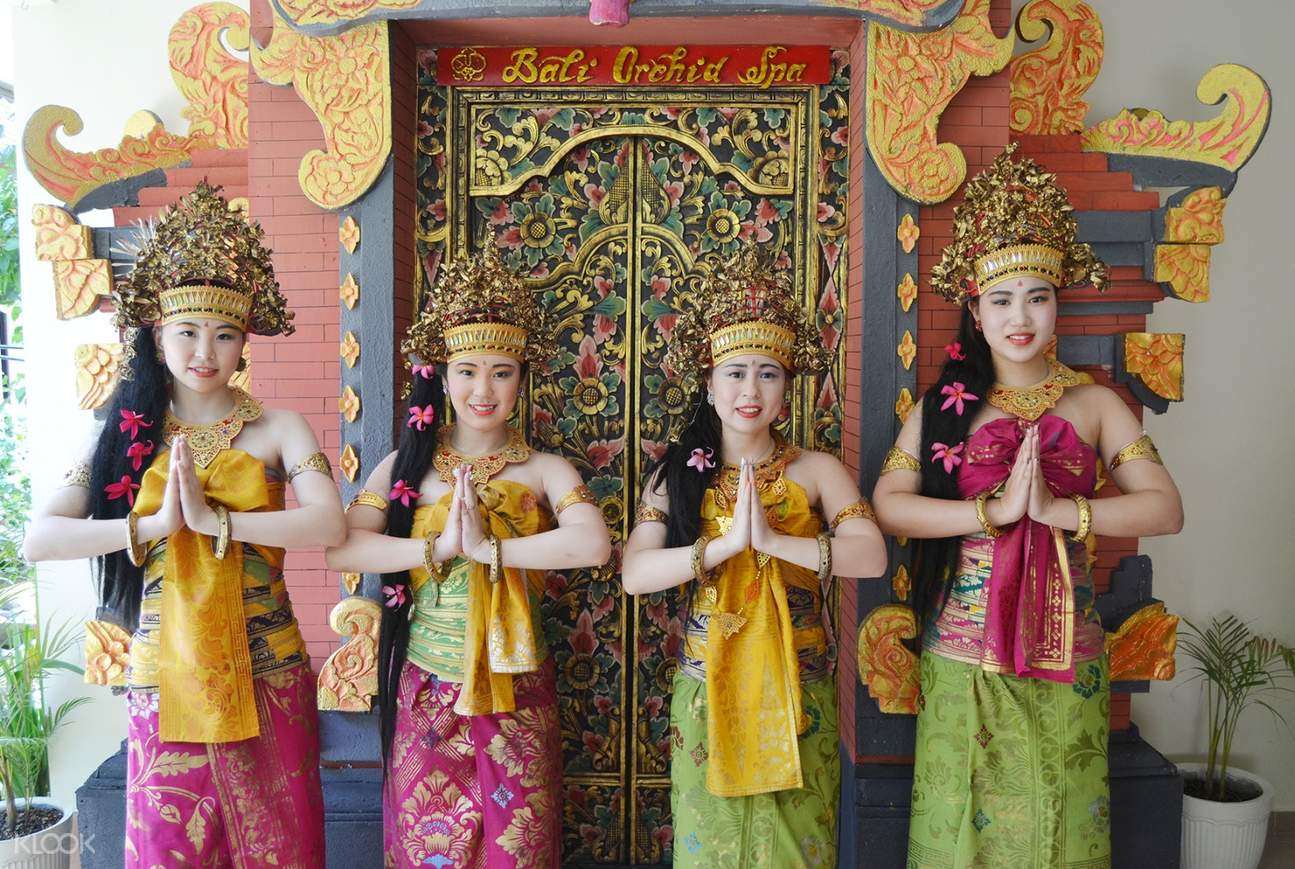
Balinese also belongs to the Austronesian language family. The modern Balinese language has two clearly defined dialects: high Balinese (basa alus) and low Balinese (basa kasar). The high style is used in the religious sphere and is considered "foreign" and incomprehensible to most of the island’s population. Low Balinese is spoken in everyday life. Between these two variants exist many linguistic variations. The choice of the appropriate dialect in communication depends on various factors: the social status of the speakers, the specific situation, the sphere of communication, the purpose of the dialogue, and so on.
High and Low Dialects of the Balinese Language
High Dialect
The high dialect is used in formal situations such as religious ceremonies, official events, and public speeches. Historically, it has also been used to communicate with high-ranking officials.
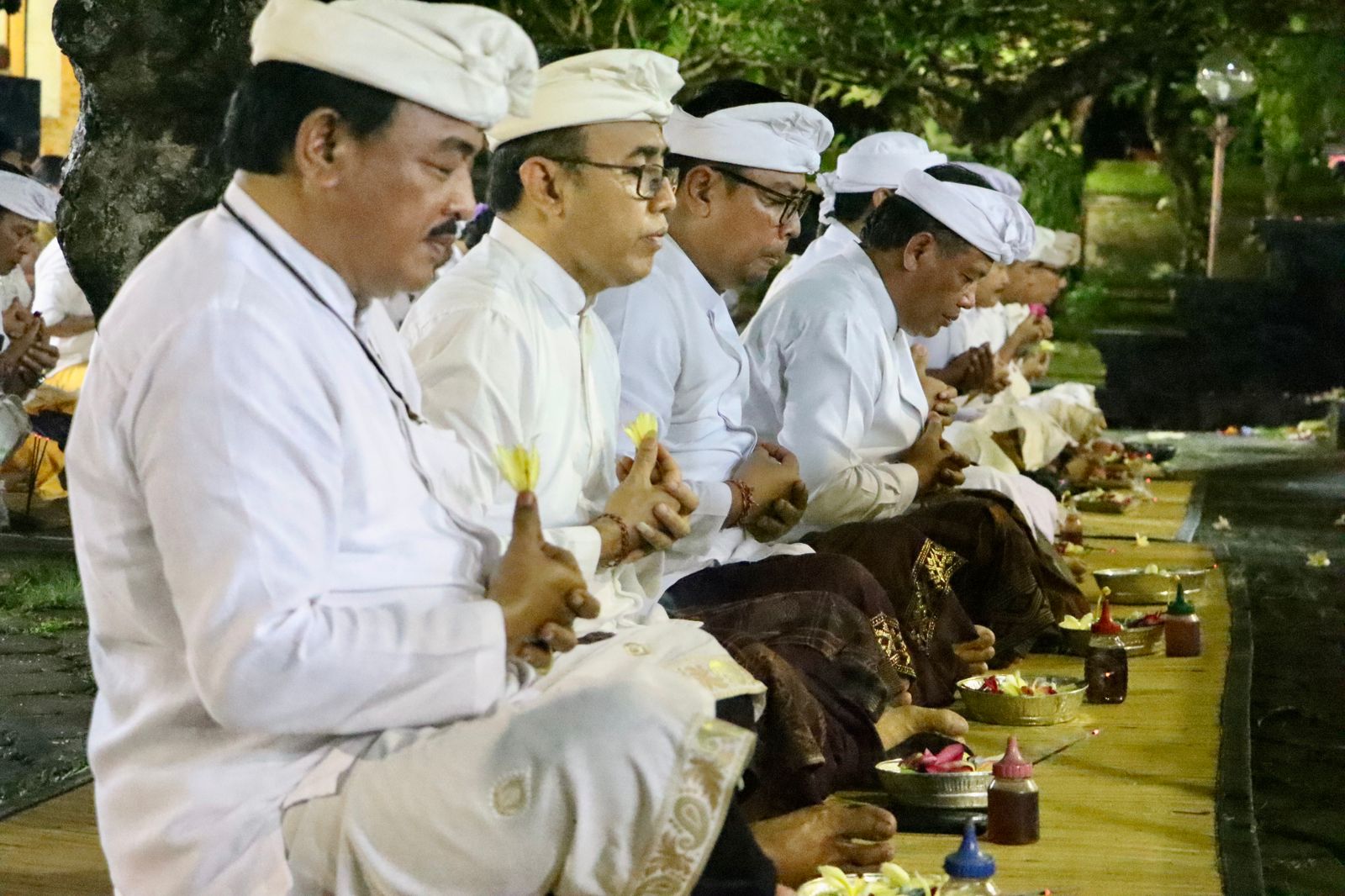
This dialect is often employed to express respect and emphasize the status of the interlocutor. It utilizes more formal and embellished phrases that highlight the high status of the conversation partner.
The high dialect is more complex in terms of vocabulary and grammar. It contains a large number of forms that may be more archaic than those in the low dialect.
Moreover, the high dialect is traditionally associated with older generations and the transmission of traditions. It is also used in the performance of traditional songs, religious texts, and literary works.
Low Dialect
The low dialect is used in everyday communication among friends, family, and in informal situations. It reflects a more casual side of life and communication.
In the low dialect, there is less formality and embellishment, making it more suitable for communication with friends and peers. However, this does not mean that respect is absent; the level of formality is simply lower.
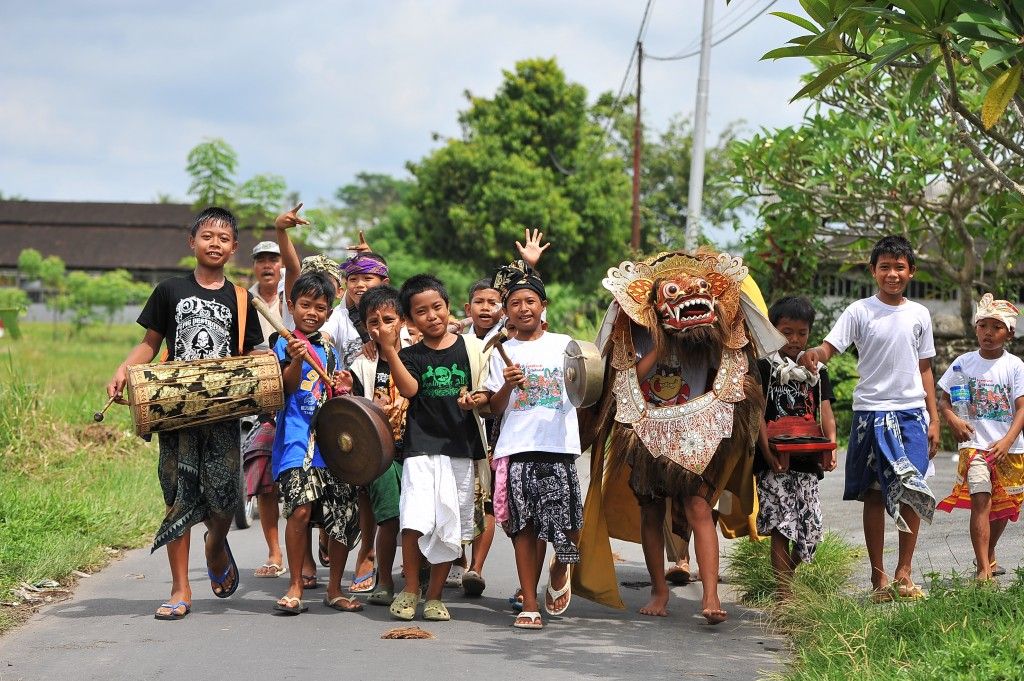
This dialect is less complex in terms of vocabulary and grammar. It may include more simplified forms and expressions, making it more accessible to a wider audience.
The low dialect is most commonly used in daily life, in home settings, and in interaction between friends and family. It reflects intimacy and friendliness in communication.
Such diversity is explained by the Hindu beliefs of the local people, according to which the entire population of the island is divided into castes. Each caste has its own language and method of communication.
Unfortunately, the high variability of Balinese makes it quite difficult for foreigners to understand and challenging to learn. To avoid awkward situations and not offend anyone, it is better to choose Indonesian or English for communication.

Balinese is not constitutionally recognized at the legislative level by the Republic of Indonesia. The language is regarded as a cultural treasure of the people of Bali province and thus deserves careful treatment and respect.
Approximately 3.3 million people (the total population of the island is about 3.9 million) speak Balinese. Additionally, every Balinese person knows Indonesian, and a small portion of the population speaks Javanese.
Balinese people appreciate it when tourists speak to them in their native language. A sincere smile and a minimal vocabulary of Balinese words can help establish good relationships with the locals and help tourists navigate awkward situations they may encounter.
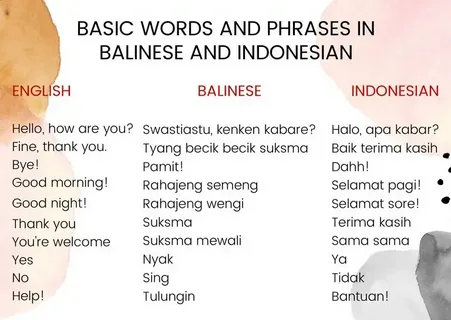
Interesting Facts About the Traditional Balinese Language
-In the Balinese language, there is a unique inflection of verbs depending on the time of day. For example, one form of the verb is used in the morning, another during the day, a third for the evening, and a fourth for the night. This highlights the importance of the time of day in Balinese culture.
-The Balinese language has a unique system of numerals that allows speakers to talk about the quantity of items without specifying an exact number. This is particularly convenient when describing large groups of items, where the exact number is not particularly significant.
-In Balinese, using the listener's name is considered somewhat rude in most situations. Instead, people use "Put" (for older individuals) or "Anak" (for younger ones) when addressing others, which emphasizes respect for the interlocutor.
-Balinese can be very concise in expression, relying on context and abbreviations. For example, instead of saying "I am going to the store," one can simply say "Ke toko," which literally means "To the store."
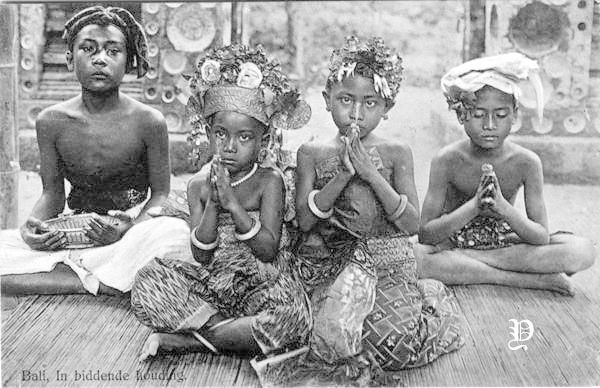
Bahasa Indonesia | Bahasa Bali | English |
Halo | Om Swastiastu | Hello |
Terima kasih | Matur suksma | Thanks |
Ya | Inggih | Yes |
Tidak | Tidak | No |
Tolong | Tempatang | Please/ Help/ Do me a favor |
Berapa harga ini? | Aji kuda né? | How much does it cost? |
Saya tidak mengerti | Tiang ten pidan | I don’t understand |
Bisa bicara bahasa Inggris? | Bisa ngomong basa Inggris? | Do you speak English? |
Di mana kamar kecil? | Ring dija WC? | Where is the washroom? |
Saya mau pesan… | Tiang jagi ngaturang… | I’d like to order.. |
Saya alergi… | Tiang alergi… | I’m allergic to.. |
Saya dari… | Tiang saking… | I’m from.. |
Apakah Anda bisa membantu saya? | Dadosne nénten ngajengiang tiang? | Can you help me? |
Saya tersesat | Tiang nyasar | I’m lost |
Bisa lebih murah? | Dados nénten ké murah? | Can you make it cheaper? |
Saya suka ini | Tiang seneng puniki | I like this |
Saya tidak suka ini | Tiang ten seneng puniki | I don’t like this |
Tolong bicara pelan-pelan | Tolong ngomong pelan-pelan | Please speak slowly |
Bagaimana cara ke…? | Kenkene cara ring…? | How to get to…? |
Saya senang bertemu dengan Anda | Tiang seneng maadolan sareng rikala | Nice to meet you! |
Apa kabar? | Kenken kabare? | How are you? |
Baik-baik saja | Becik-becik kemanten | I’m fine |
Saya butuh dokter | Tiang jagi dokter | I need a doctor |
Bisakah Anda mengulangi? | Dados ngulangin tiang? | Can you repeat? |
Saya mau belajar bahasa Bali | Tiang jagi ngawi Bahasa Bali | I want to learn Balinese |
Tolong tunjukkan pada peta | Tolong tunjukin ring peta | Show me on the map please |
Saya akan pulang | Tiang jagi wali | I’m going home |
You can add one right now!